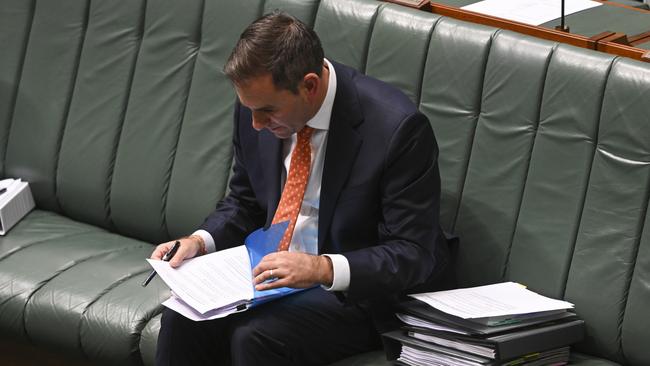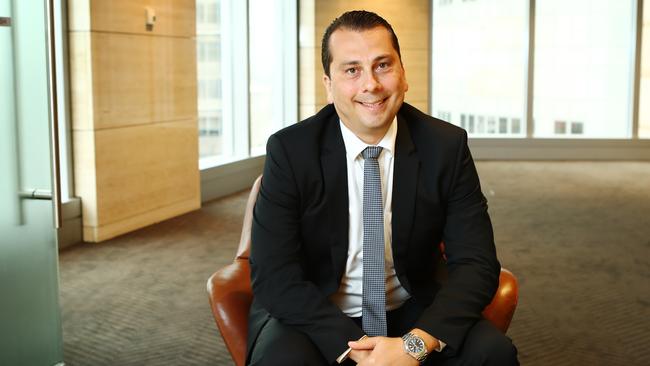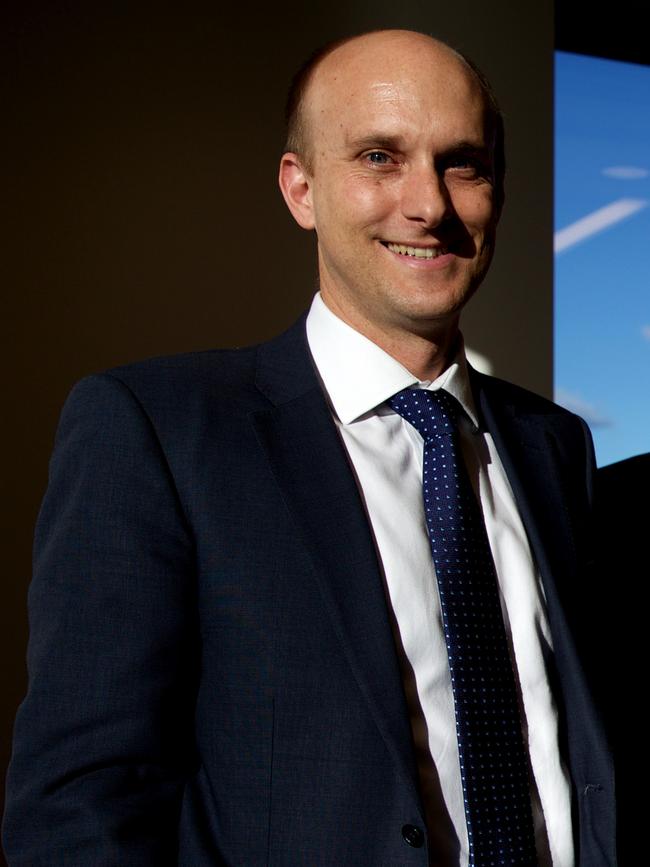Economists say budget lessens the prospects of rate cuts
Economists have pushed back or scrapped completely any chance of rate cuts this year, and predict the RBA could now go higher.

Markets won’t easily give up on interest rate cuts later this year, but economists say the federal budget has increased the risk of rates staying high for longer than expected or even rising further.
Financial markets were little changed and cash rate futures implied only a 20 per cent chance of a 25 basis point increase in the cash rate by August and a 60 per cent chance of a cut by year end.
An expansionary budget was broadly expected by markets after low employment and high commodity prices boosted the bottom line, yet economists raised concerns about the inflationary impact of a $21bn spending boost planned for the next four years to 2026-27.
UBS Australia economist George Tharenou pushed back his expectation of the first interest rate cut by the Reserve Bank from November to next February.
The RBA abruptly restarted rate rises this month, lifting the official cash rate to a decade high of 3.85 per cent, even after an aggressive 375 basis points lift from a record low of 0.1 per cent in the past year as inflation blew out.

A “stimulatory budget outlook” and global factors may even see another rate rise, Tharenou warns.
While noting that policies such as increased subsidies for energy bills will “technically lower” measured CPI inflation by 75 basis points in fiscal 2023-24, they will still free up additional cash flow for lower-income households, which may result in higher spending and increased demand.
Despite a rapid fiscal consolidation of the budget position in fiscal 2022-23, the overall stance of the budget outlook is “still stimulatory”, giving “upside risk” on economic growth and inflation which will keep rates higher for longer, according to Tharenou.
The budget balance will expand over next two years to fiscal 2024-25 by 1.5 percentage points of the economy. The $12bn net economic impact of policy decisions in 2023-24 was a “significant” 0.5 per cent of GDP and nominal expenses will surge 8 per cent in the coming year.
“This is combined with an increasing likelihood that the minimum wage decision, due by June, will be ‘linked’ to headline CPI which was 7 per cent on-year the March quarter,” Tharenou notes.
“Meanwhile, the housing market appears to have troughed earlier than we previously expected.”
It comes as the risks around the outlook also shift, with global growth surprisingly re-accelerating this year, and the US labour market remaining stronger than expected.
In his view, “still hot” US inflation now challenges the Fed’s flagged pause to rate rises.
Because of this, Tharenou sees an increasing risk of the RBA lifting the cash rate again by another 25 basis points to 4.1 per cent, with the most likely timing in July after the minimum wage decision, or potentially in August after the June quarter CPI and as the RBA revises its economic forecasts.

“More definitively, we also now think the RBA is unlikely to cut the cash rate this year,” he says.
BetaShares chief economist David Bassanese also sees upside risk for inflation and interest rates after what he describes as an “unambiguously expansionary” federal budget.
“Contrary to all the talk of a surprise budget surplus for 2022-23, the second Labor budget under Treasurer Jim Chalmers is unambiguously expansionary, with a boost to GDP growth equivalent to around 1.5 per cent over the next two years,” he says.
“This adds to the risk that the RBA will need to raise interest rates at least once and possibly twice more in the coming months.”
While the focus is usually on the projected budget outcome for the coming financial year, Bassanese says that “in a classic smoke and mirrors exercise”, the Treasurer diverted attention towards an “accidental” surplus in fiscal 2022-23, which was “caused by the late discovery of a lot more revenue than expected which the government simply did not get a chance to spend in the remaining weeks of this financial year”.
A “sad reality” of the budget is that it made no effort to tighten fiscal settings to support monetary policy in helping to rein in inflation and tackle Australia’s now ingrained structural budget deficit.
Although various measures have been introduced to lower CPI inflation via energy and rental rebates, Bassanese notes the expected 3.25 per cent rate of CPI inflation over the year to June 2024 is only a marginal 0.25 per cent below those in the October budget and RBA forecasts.
“The challenge of budget consolidation will only get harder, not easier, from here,” he says.
Beyond the waning of large but partly temporary fiscal tailwinds in 2022-23, the budget balance is forecast to slip back into deficits, growing to $36.5bn in fiscal 2025-26.
But these projections are a cumulative $100.4bn improvement in the public finances over this period since the last budget estimates in October 2022.

“At a time when the RBA is lifting rates to contain elevated inflation and accelerating labour costs, we assess the budget’s near-term boost to household incomes to have an incrementally hawkish read-through for monetary policy,” says Goldman Sachs Australia chief economist Andrew Boak.
“Especially given surging migration-led population growth and the recent strong rebound in house prices, we see a firming case for further policy tightening by the RBA over the coming months.”
His base case is for a final 25 basis point rate rise in July, following confirmation of another large annual reset in the minimum wage and utility prices, but he says the risks are now skewed to more tightening being required, potentially as soon as next month’s board meeting.
But Barrenjoey chief economist Jo Masters says that while the budget delivers an inflationary pulse – from improved household spending and a strong labour market – the effect is likely to be only a 0.1 percentage point increase over two years.
“This does not materially change our inflation outlook, nor does it materially worsen the inflation problem,” she says. But while noting the government’s cost-of-living measures won’t worsen the inflation problem, she also says they “aren’t generating disinflation or deflation, leaving the job of bringing inflation back within the 2-3 per cent target band largely with monetary policy.”






To join the conversation, please log in. Don't have an account? Register
Join the conversation, you are commenting as Logout